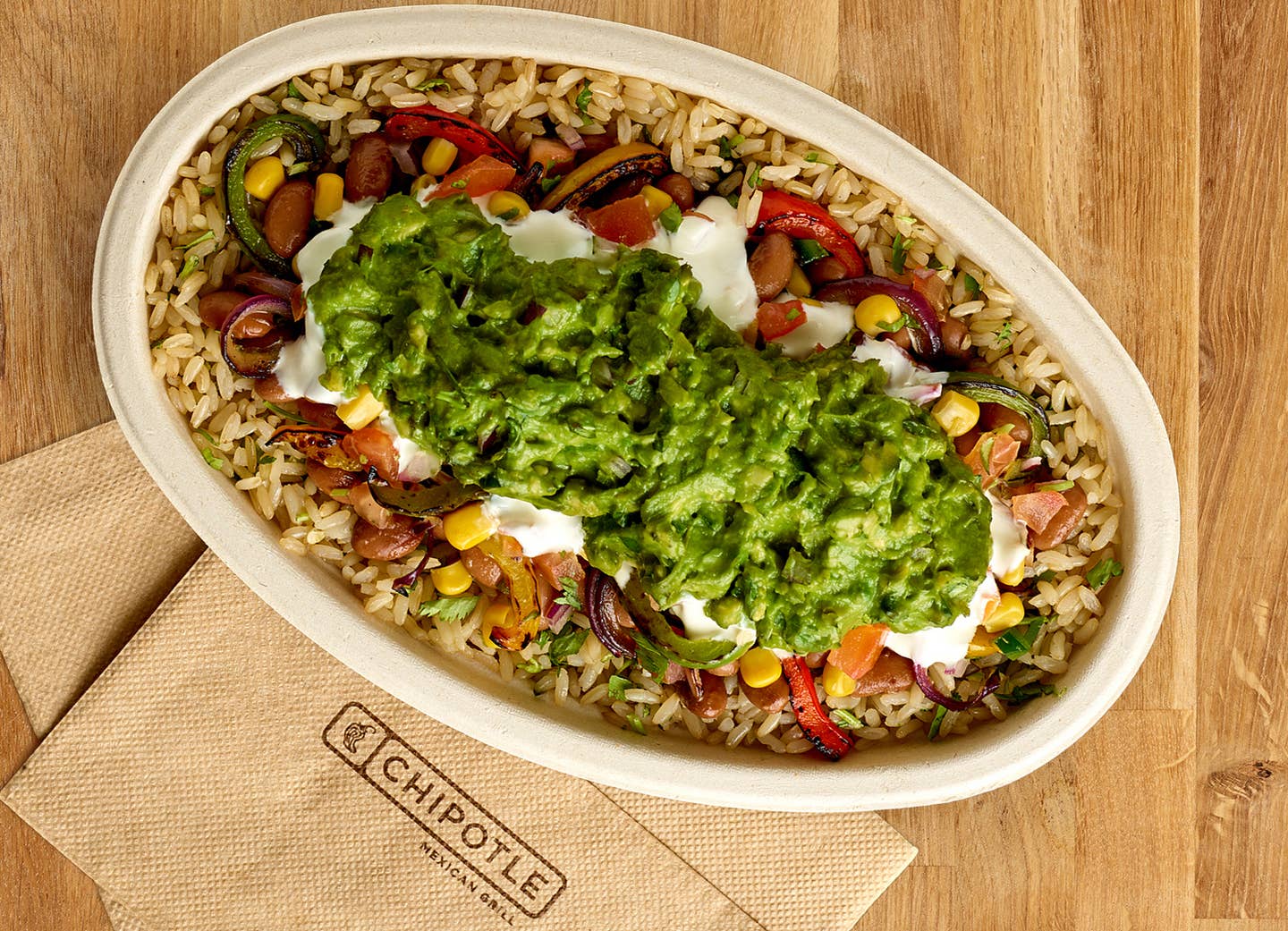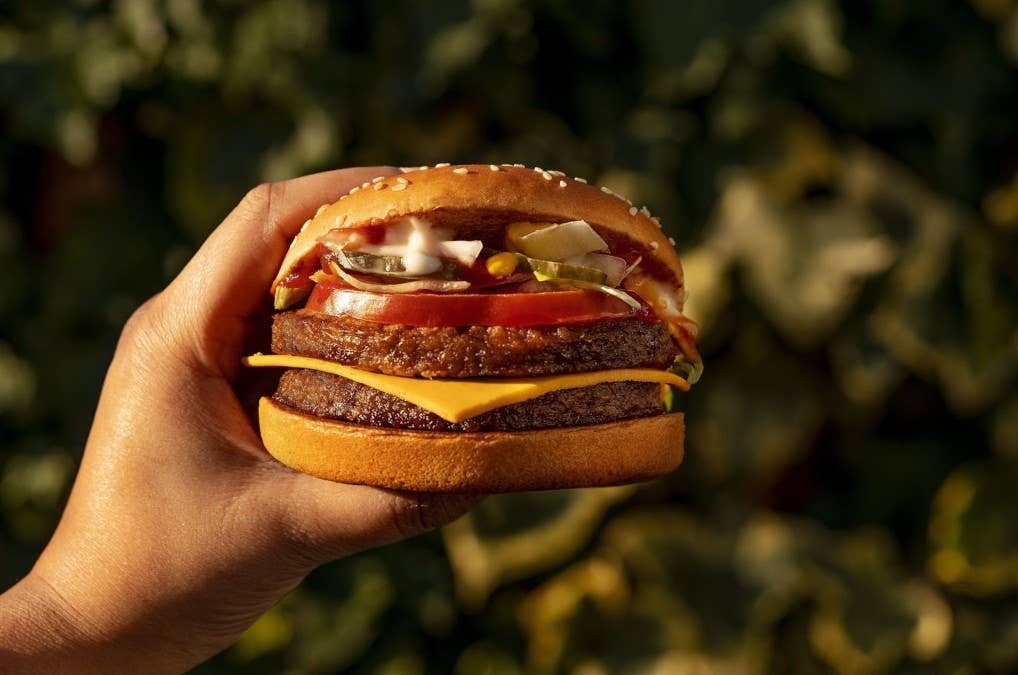
To Keep Muscle Mass as We Age, Eat More of This, Study Finds
You can keep working out, add more weight training, and do everything you can to keep muscle mass as you age. But even the fittest people are not exempt from the fact that we tend to lose muscle mass every decade after the age of 30, in a process called sarcopenia. Now comes news from the academic world that the right diet may help you retain more of your lean body mass, and stay strong well into your retirement years.
The latest research examined how a high plant protein diet among China's older population prevented muscle loss over time. The study also indicated that the Standard American Diet consumed in Western countries has a negative impact on retaining muscle mass. But the simple act of adding more plant foods and plant-based proteins to one's diet can help you retain the muscle you have.
The researchers examined data from nearly 5,000 individuals over the age of 60 and factored in both dietary choices and muscle mass. The data originally was collected as part of the 2018 China Health and Nutrition Survey. It showed that two-thirds of the protein consumed by participants came from plant-based foods such as soybean. The study revealed that the participants who consumed the most plant protein held onto higher levels of muscle mass. In comparison, the scientists found no link between animal protein and muscle mass.
The average amount of protein consumed was less than 20 grams per meal, slightly less than the recommended amount of protein per meal, which is 25 to 40 grams
This preliminary data suggests that eating more plant protein –– aiming for 68 grams a day for women and 78 grams a day for men –– could help prevent muscle loss as we age.
Diet for Healthy Muscle Mass
The study authors explained that animal protein provides individuals with significant levels of protein and all essential amino acids, but this consumption comes with a price. Animal protein typically contains high levels of saturated fat, cholesterol, and calories. The study emphasized that the traditional Chinese diet has a much higher variation between plant and animal proteins that lends to a healthier diet.
“The traditional Chinese type of diet is [characterized] by large amounts of cereals and vegetables. Thus, plant protein intake contributed more to the total dietary protein intake than animal protein intake,” the authors stated. “It is possible that the ingestion of greater amounts of vegetable-source proteins may be [able to] achieve the same anabolic response evoked by smaller quantities of animal-source proteins. “To enhance the nutritional quality, the Chinese Nutrition Society suggests people consume cereals and legumes together,” the authors advised.
The study aimed to understand how plant protein could help prevent a major condition common among older individuals, sarcopenia –– a condition of muscle loss causing a lower quality of life and reduced function. The authors noted that more research is needed due to several limitations, which did not allow them to clearly determine causal relationships. For example, the lack of association between animal protein and muscle mass could be due to the sample population's generally higher plant protein consumption.
The authors continued by adding that “ascorbic acid found in vegetables and fruits can enhance plant protein absorption.”
Bone Density and Plant Protein
Muscle mass is a major worry for those reaching old age, and it is often accompanied by losing bone density. But this June, a new study found that a plant-based diet reduces the indicators of bone frailty by up to 42 percent in women over 60.
The study examined how animal, dairy, and plant protein helped prevent frailty in older individuals. The study found that even substituting 5 percent of animal-based protein with plant protein was associated with bone-strengthening benefits.
Building Muscle on a Plant-Based Diet
This January, one study set out to debunk myths that plant-based diets would not allow individuals to build muscle as well as animal protein. The study showed that plant-based protein when supplemented with soy can build muscle mass with the same efficacy as animal-based diets.
“A high-protein, exclusively plant-based diet (plant-based whole foods plus soy protein isolate supplementation) is no different than a protein-matched mixed diet (mixed whole foods plus whey protein supplementation) in supporting muscle strength and mass accrual, suggesting that protein source does not affect resistance training-induced adaptations in untrained young men consuming adequate amounts of protein,” the researchers wrote at the time.
Similarly, potato protein shows to have the same muscle-building effects as animal protein, according to research published in June. The study found that potato consumption caused near-equivalent levels of muscle protein synthesis as milk consumption, dispelling worries that plant-based proteins are inadequate for muscle building or maintaining strength.
For more plant-based happenings check out The Beet's News articles.
Top 10 Sources of Plant-Based Protein According to a Nutritionist
1. Seitan
Protein: 21 grams in ⅓ cup (1 ounce) Seitan isn’t as popular as other proteins, but it should be! Made from wheat gluten, its texture resembles ground meat. It’s often used in pre-made veggie burgers or meatless nuggets. Seitan has a savory taste, like mushrooms or chicken, so it works well in dishes that call for an umami flavor. With a hearty texture, seitan can be the star of practically any vegan main dish. Add it to stir-fries, sandwiches, burritos, burgers, or stews. Like tofu, seitan will take on the flavor of any marinade or sauce.
2. Tempeh
Protein: 16 grams in 3 ounces If you like a protein with a bit of bite, add tempeh to your list. Made from fermented soybeans, tempeh has a slightly nutty flavor and is pressed into a block. Most varieties include some sort of grains, such as barley or millet. Not only is tempeh a plant-based source of protein, but the fermentation process also creates good-for-your-gut probiotics. You can cut tempeh right off the block and use it as the base for a sandwich or pan-fry it with some sauce. Or, crumble, heat, and make it the star of your next taco night.
3. Lentils
Protein: 13 grams in ½ cup cooked Lentils come in multiple varieties--red, yellow, green, brown, black. Regardless of the type lentils are small but mighty nutritional powerhouses. They pack a good amount of protein as well as iron, folate, and fiber. When cooked, brown lentils retain their texture and can be the base for a grain bowl or make a hearty substitute for ground meat in meatballs, lasagna, tacos or Bolognese. Red lentils are a bit softer and make a nice add-in for a hearty soup, chili, or stew.
4. Hemp Seeds
Protein: 10 grams in 3 tablespoons Hemp seeds are a tender and nutty seed, derived from the hemp plant. They contain good amounts of omega-3s, iron, folate, magnesium, phosphorus, and manganese. They are also a solid source of both soluble and insoluble fiber, which helps to keep your digestive tract healthy and humming. Because they pack a double whammy of protein and healthy fats, hemp seeds can help satisfy hunger, preventing those embarrassing stomach growls as you slog your way to your lunch break. Add them to your morning smoothie or sprinkle them on top of yogurt, oatmeal, or even a salad.
5. Tofu
Protein: 9 grams in 3 ounces (⅕ of a block) Made from coagulated soybeans, tofu is the most popular plant-based protein. Soy is one of the only meatless "complete" proteins, meaning that it contains all of the essential amino acids that the body can’t make but needs for muscle and immune function. With 15% of your daily calcium needs, tofu is also a good replacement for dairy.
6. Edamame
Protein: 9 grams of protein in ½ cup This sushi appetizer is a nutrient powerhouse, so eat it anytime. Edamame is really just another name for soybeans in their pods. Let’s list off some stats--a small ½-cup serving of edamame has 9 grams of protein, 15% of your daily vitamin C, 10% of your daily iron and 16% of your daily fiber. Keep a bag of edamame in your freezer to serve as a fun-to-eat side dish or opt for the shelled variety to toss into salads or a grain bowl.
7. Quinoa
Protein: 8 grams per cup (cooked) Quinoa is an ancient grain and since it's gluten-free a great choice for anyone avoiding gluten. Add it to your burger recipe to create filling texture, or instead of meat in your taco or burrito. Quinoa is among the healthiest foods on the planet, delivering phytonutrients that have anti-inflammatory qualities, so keep it in your pantry for any meal that needs a filling grain. Just remember to soak it and rinse before cooking to get rid of any bitter taste.
8. Black Beans
Protein: 7 grams in ½ cup (canned) Eating beans on the regular might as well be a prerequisite for a plant-based diet. Not only are canned black beans inexpensive, but they also contribute 10% of your daily iron and 25% of your daily fiber to your diet. For less than $1 a can, beans can be the star of tacos, quesadillas, salads, soups, burgers, or dips.
9. Amaranth
Protein: 6 grams in ⅔ cup (cooked) Chances are you’ve never cooked amaranth. But you should, since this tiny, gluten- free grain is packed with almost 30% of your daily fiber and 20% of your daily iron. Cook it like a traditional grain to yield a soft, porridge-like texture. Many people add amaranth to other a hot breakfast cereal mixture, like oats and quinoa. It also pops like popcorn. Toss it in a pot with some oil and wait for it to pop up into a nutritious snack.
10. Peas
Protein: 5 grams in ⅔ cup If peas were one of your most hated veggies as a kid, it’s time to give them another chance. These green beans are a great low-calorie protein to keep in your freezer. Sure, they don’t always taste great when steamed or microwaved (who wants to eat mushy, overcooked peas?), but they do blend well into a yummy puree that can be slathered on toast. To amp up the flavor, add some lemon juice or mint to your mix before you blend.
More From The Beet






